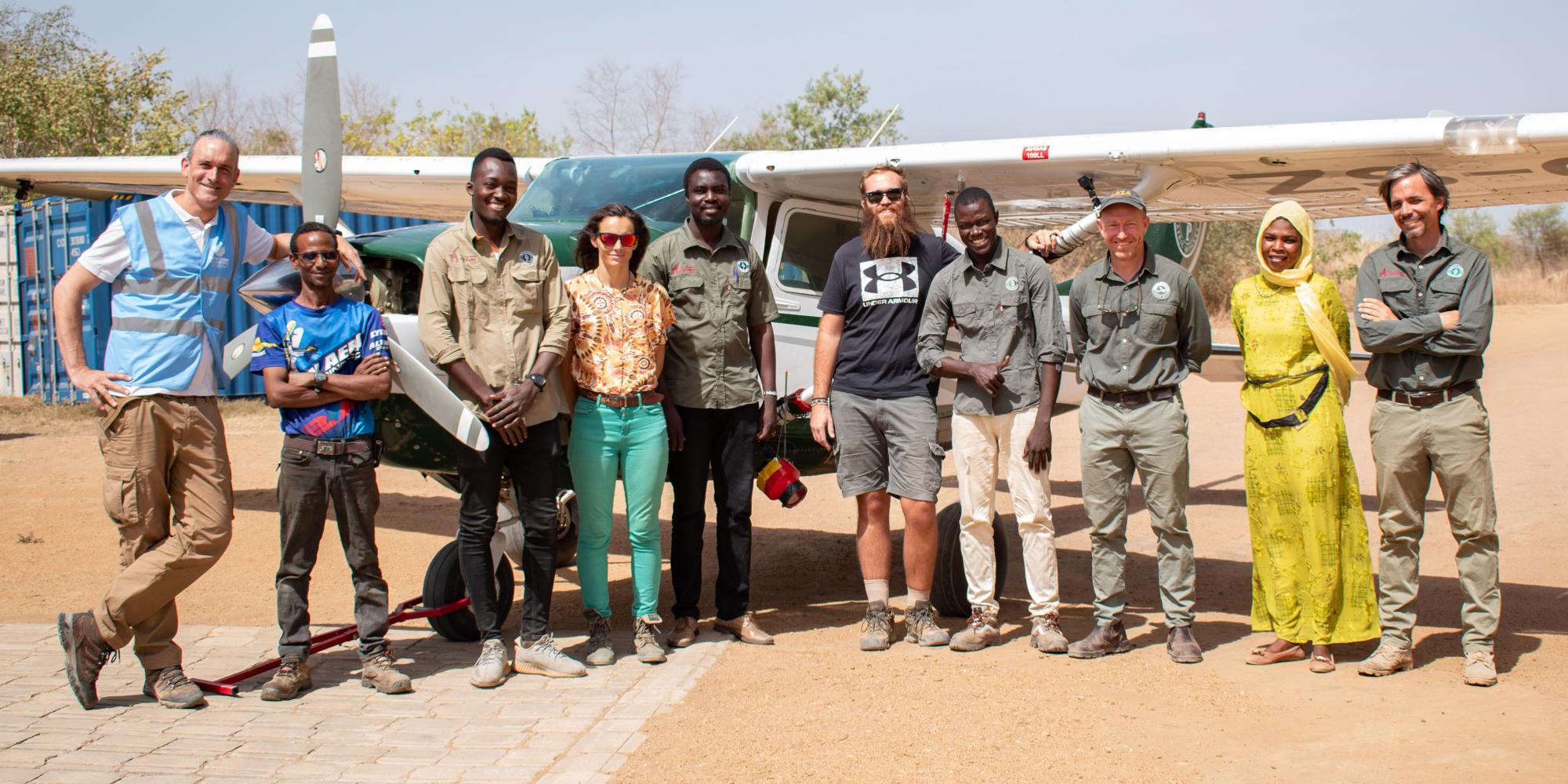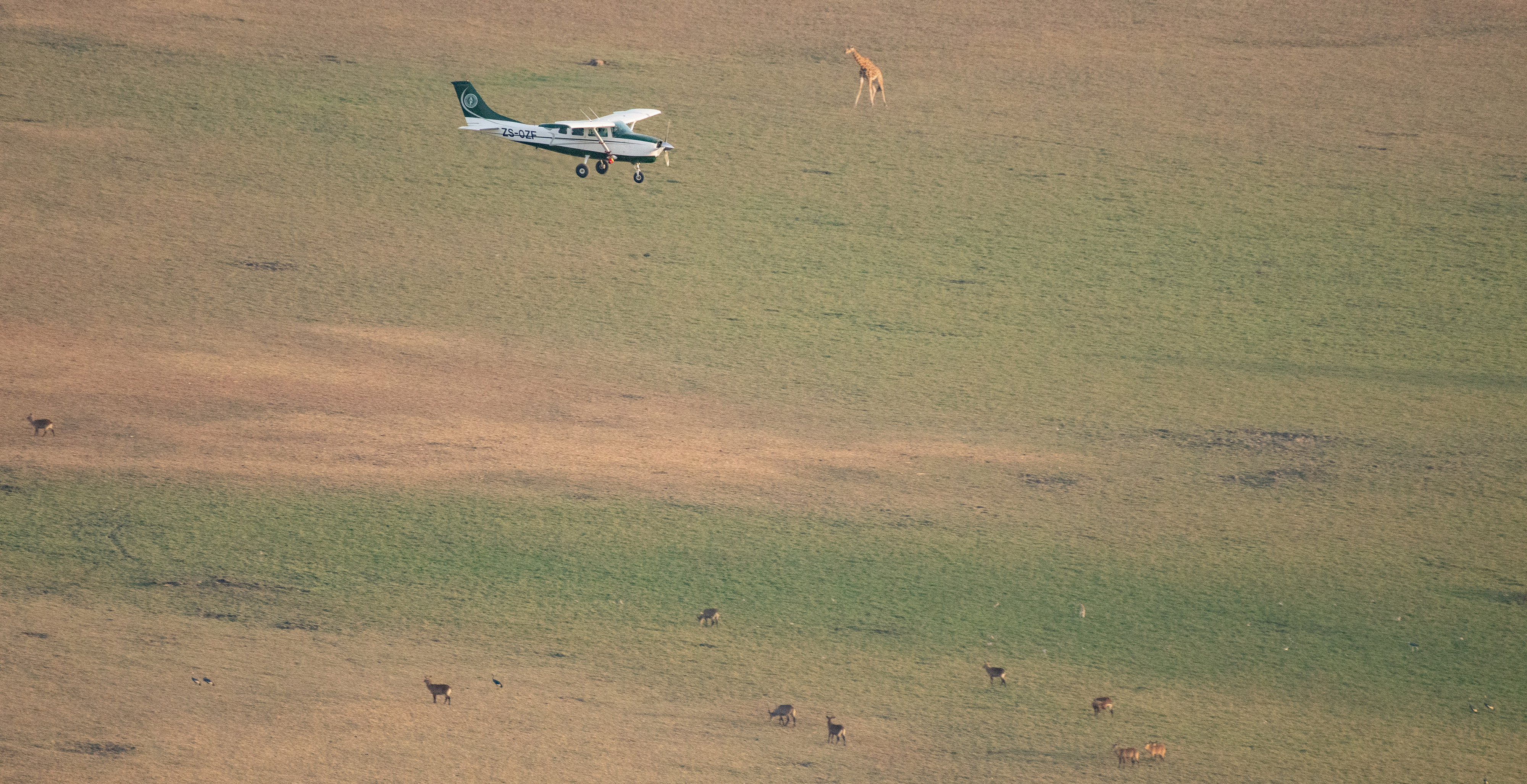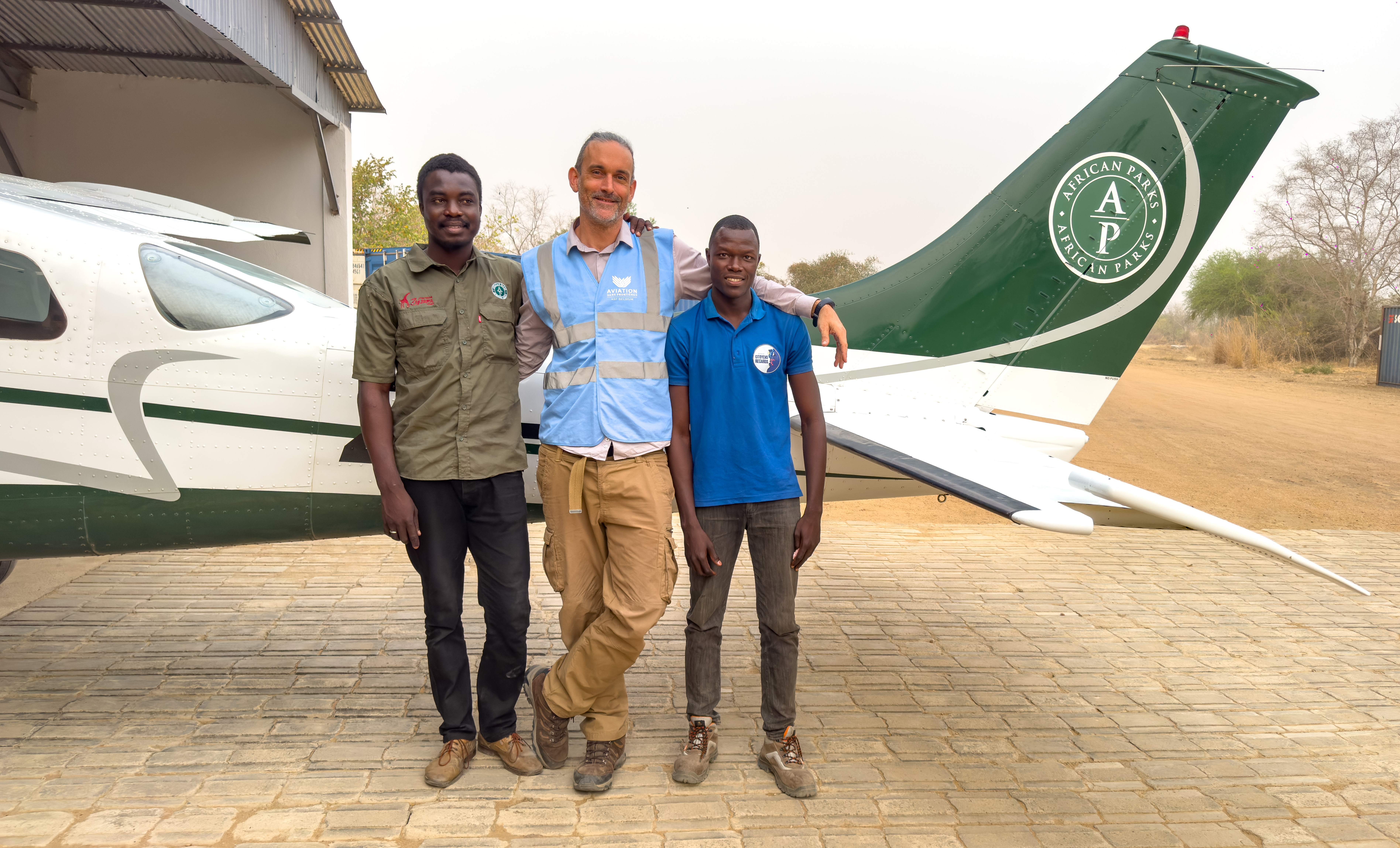The University of Liège, Gembloux Agro Bio Tech and Aviation Sans Frontières Belgium are supporting African Parks and the government of Chad in the aerial photographic survey of the Greater Zakouma Ecosystem (GZE) and the Aouk-Keïta Landscape.

Since March 18 and until mid-May 2024, a large-scale aerial inventory campaign is taking place in the southeast of Chad, in the Greater Zakouma Ecosystem (GZE) and the Aouk-Keïta Landscape. Around 150 hours of flight in a Cessna 206 are planned, to estimate the size of populations of large herbivores, such as elephants, giraffes, buffalo, and antelopes, but also human pressures.
The aerial inventory applies the standards of the “Monitoring the Illegal Killing of Elephants” (MIKE) program, of the Convention on International Trade of Endangered Species (CITES).
In addition to traditional aerial wildlife surveys methods, this survey tests, in parallel, new photographic aerial survey methods, with data analysis by the artificial intelligence algorithm developed at the University of Liège - Gembloux Agro-Bio Tech.

In the Zakouma National Park, with an area of 3.060 km², the inventory consists of a total count of 100% of the Park, which represents a technical challenge and a first in terms of photographic survey.
To the east of the Park, a sample count is also carried out. This type of inventory is more conducive to photographic surveys, because the area covered by the cameras is smaller.
During this sample count to the east of the Park, a very high spatial resolution Pléiades Neo satellite image was also taken, as part of a cooperation agreement between Aviation Sans Frontières and the Airbus Foundation. The challenge is to explore the potential of wildlife inventories from satellite images, combined with the use of aerial pictures.
The survey of the rest of the Greater Zakouma Ecosystem (28.162 km²) and the Aouk-Keïta Landscape (38.757 km²) is also a sample count.

Aerial survey, in particular the total count, is a tool used by the managers of Zakouma National Park almost every two years since 2005 to monitor the wildlife of the park. It is a barometer of park management effectiveness, making it possible to assess the health and resilience of the ecosystem, as well as the effectiveness of the management measures implemented to protect it. It is remarkably unique, especially in Central Africa, to have such a comprehensive dataset over such a long period.
The challenge of this mixed survey (observers and photo) is to compare, on the one hand, the effectiveness of inventories with on-board observers and photographic survey, but also, potentially, to compare the effectiveness of the sample count with the total count east of Zakouma National Park.

African Parks aims to keep a critical eye on the methods and approaches used to optimize aerial surveys of wild and domestic fauna, and to ensure continuity with past inventories. Indeed, even more than absolute values, it is the trends which remain the most valuable information for Park managers. Thus, African Parks plans to repeat traditional and photographic mixed surveys over several years to ensure overlap in results produced by the different approaches. This research on innovative large-scale wildlife monitoring methods, using aerial and satellite images, represents the heart of the partnership between African Parks and the University of Liège – Gembloux Agro-Bio Tech since 2021.
The Greater Zakouma Ecosystem (GZE) includes three protected areas with different statuses. These are Zakouma National Park, the Bahr Salamat Wildlife Reserve, and the newly created Siniaka Minia National Park. The GZE is home to the last migration of large wildlife (elephants, lions, large antelopes, giraffes, ostriches) in the Sudano-Sahelian eco-climatic zone.

In 2010, African Parks, in partnership with the Government of Chad, took over the management of the Zakouma National Park, with an area of 3.060 km². Law enforcement forces were reorganized, and emphasis was placed on working closely with local communities to protect the Park. The Park has undergone a remarkable restoration after decades of poaching which threatened its very existence. For several years not a single elephant has been killed by poachers. While in March 2011 there was only one baby elephant born in the Park, 127 baby elephants aged under three years were counted during the aerial inventory in 2018, a sign of excellent health. of the elephant population.
In 2017, following the success of the partnership with African Parks in Zakouma National Park, the government of Chad invited African Parks to manage the Siniaka Minia Wildlife Reserve, as well as the Bahr Salamat Wildlife Reserve and adjacent wildlife corridors, thus integrating all 28.162 km² of the Greater Zakouma Ecosystem (GZE) into this new mandate.
The Aouk project operating in the Aouk-Keïta Landscape, 38.757 km², in the south-east of Chad, initiated by African Parks in 2020, aims to restore and develop, through legal and traditional instruments, the ecosystem processes and services which support both the biodiversity and local populations within this vast border landscape with the Central African Republic.

